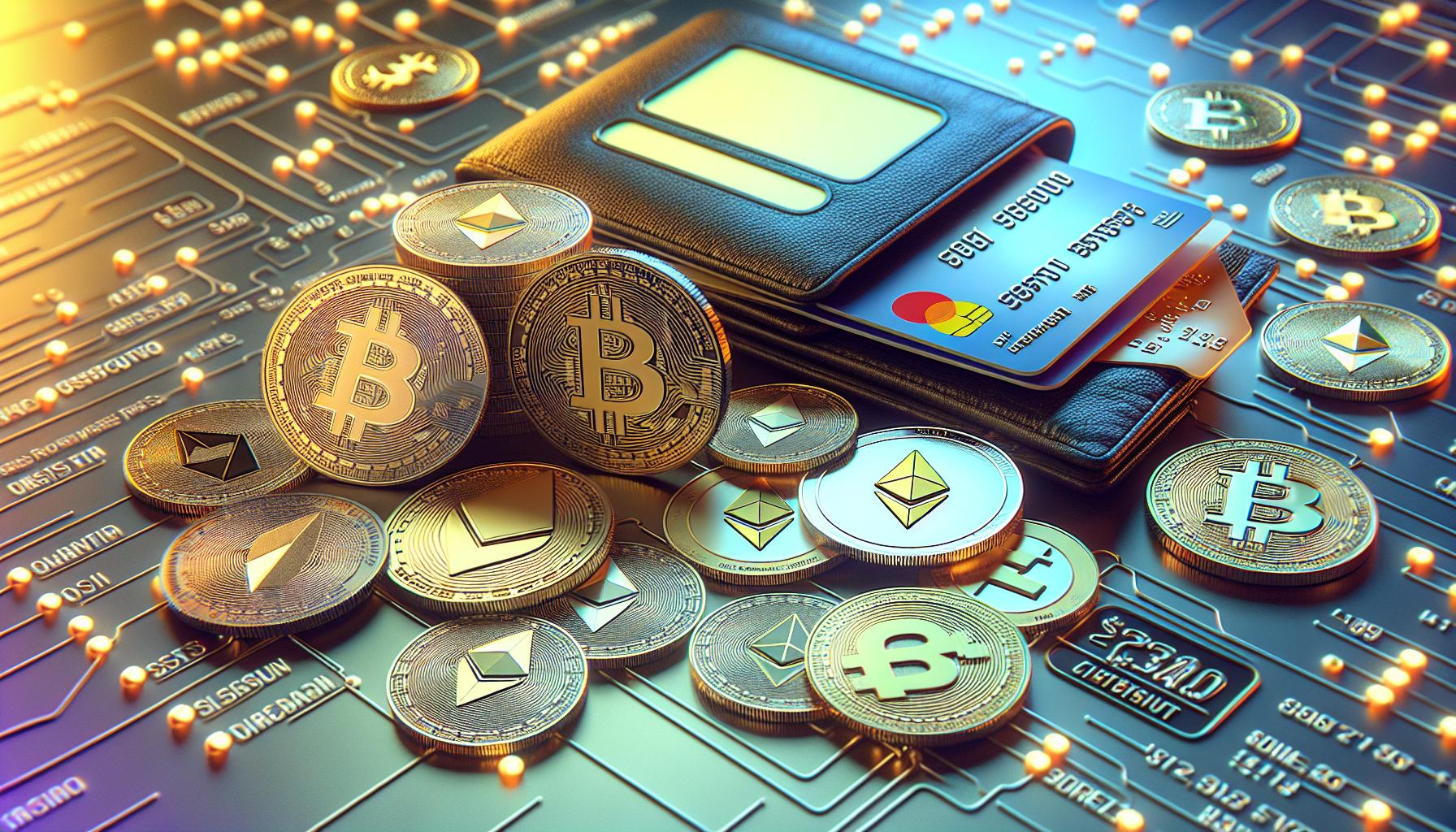If you’ve ever wondered why MoonPay fees tend to be on the higher side, you’re not alone. Understanding the factors behind these fees can shed light on the dynamics of the cryptocurrency market. When you engage in crypto transactions through MoonPay, you may have noticed the impact of fees on your transactions. The reasons for these higher fees are multifaceted and can vary based on several key factors.
When you delve into the world of MoonPay fees, it’s essential to consider the intricacies of the crypto ecosystem. Factors such as network congestion, processing speed, and market demand all play a role in determining the fees you encounter. By exploring the reasons behind MoonPay’s fee structure, you can gain valuable insights into the broader landscape of cryptocurrency transactions.
Understanding MoonPay’s Fee Structure
Transaction Fees
When it comes to MoonPay’s fee structure, transaction fees play a crucial role. MoonPay charges a percentage fee on each transaction made through its platform. This fee can vary based on several factors such as the amount being transacted, the type of cryptocurrency involved, and the payment method used.
For example, if you’re looking to buy Bitcoin using MoonPay, you might encounter a transaction fee ranging from 3% to 4% of the total purchase amount. Keep in mind that these fees are in addition to any network fees that may apply.
Credit Card Charges
MoonPay facilitates cryptocurrency purchases using credit or debit cards, which can also contribute to the overall fees. Credit card charges associated with MoonPay transactions are typically higher compared to other payment methods due to the convenience and speed they offer.
For instance, if you opt to buy Ethereum with a credit card via MoonPay, you may incur a credit card processing fee of around 5% to 6% on top of the transaction amount. It’s essential to consider these additional charges when using credit cards for cryptocurrency purchases through MoonPay.
Network Fees
In addition to transaction and credit card charges, network fees are another component of MoonPay’s fee structure. Network fees are the charges associated with validating and processing cryptocurrency transactions on the blockchain network. These fees can fluctuate based on network congestion and the specific cryptocurrency being transacted.
For example, sending Bitcoin from MoonPay to another wallet incurs network fees to prioritize and confirm the transaction on the Bitcoin network. These fees are essential for network security and incentivizing miners to validate transactions promptly.
Understanding MoonPay’s fee structure is essential for effectively managing costs when engaging in cryptocurrency transactions through their platform. By considering transaction fees, credit card charges, and network fees, you can make informed decisions and optimize your cryptocurrency purchasing experience.
Factors Influencing MoonPay’s High Fees

Security Measures
To maintain a secure environment for cryptocurrency transactions, MoonPay invests significantly in robust security measures. Security mechanisms such as encryption protocols, multi-factor authentication, and constant monitoring of transactions are crucial aspects that contribute to higher fees. While these measures ensure the safety of your transactions, they also necessitate additional operational expenses, ultimately impacting the fee structure.
Exchange Rate Margins
MoonPay determines its fees based on various factors, including exchange rate margins. Exchange Rate Margins represent the difference between the market rate and the rate at which MoonPay offers cryptocurrency purchases. These margins allow MoonPay to generate revenue through the variation in rates. Consequently, higher exchange rate margins result in increased fees for users during transactions.
Operational Costs
Operating a platform like MoonPay involves substantial Operational Costs. From maintaining the infrastructure to providing customer support, every aspect of MoonPay’s operations incurs expenses. These costs are factored into the fee structure to ensure the sustainability and efficiency of the platform. Consequently, the need to cover operational expenses contributes to the higher fees associated with MoonPay transactions.
Comparing MoonPay Fees With Other Crypto Platforms
Fee Comparison Analysis
When comparing MoonPay fees with other cryptocurrency platforms, it’s essential to consider multiple factors influencing the fee structures. MoonPay’s fees typically vary based on transaction amount, cryptocurrency type, and payment method. Transaction fees on MoonPay can range from about 4% to 5%, depending on these variables. However, these fees are competitive in the industry, considering the convenience and speed of transactions offered by the platform.
In contrast, some traditional exchanges might charge around 10% or more for cryptocurrency purchases, making MoonPay a relatively cost-effective option for users. Moreover, MoonPay’s transparency regarding fees and the breakdown of costs adds to its credibility among users seeking a clear understanding of their transaction expenses.
Service Quality and Speed
Another aspect to consider when comparing MoonPay with other platforms is the service quality and transaction speed provided. MoonPay is known for its user-friendly interface, making it simple for individuals to buy or sell cryptocurrencies. The platform’s efficient verification process and customer support contribute to a seamless user experience.
Regarding transaction speed, MoonPay offers instant processing for most transactions, allowing users to quickly access their purchased cryptocurrencies. This agility sets MoonPay apart from some exchanges that may have longer processing times, adding to the overall value proposition for users seeking prompt transactions.
When evaluating MoonPay against other crypto platforms, its competitive fees, transparency, service quality, and transaction speed make it a favorable choice for individuals looking to engage in cryptocurrency transactions efficiently and cost-effectively. Understanding these factors can help you make informed decisions when utilizing MoonPay for your crypto needs.
Users’ Perception of MoonPay Fees
Customer Reviews and Feedback
When it comes to MoonPay fees, many users have shared mixed reviews and feedback. While some appreciate the convenience and ease of using the platform for cryptocurrency transactions, others have raised concerns about the high fees associated with MoonPay.
Users who find MoonPay fees high often highlight the impact it has on the overall cost of their transactions. It’s important to consider these concerns when deciding whether to use MoonPay for your cryptocurrency purchases. Reading through customer reviews can give you a better understanding of how users perceive MoonPay fees and help you make an informed decision.
Impact on User Choices
The perception of MoonPay fees can significantly influence user choices. If users believe that the fees are too high compared to other platforms, they may opt for alternative services that offer lower transaction costs. Your decision to use MoonPay may be influenced by factors such as the total fees incurred, transparency in fee breakdowns, and the speed of transaction processing.
Before proceeding with MoonPay for your cryptocurrency transactions, it’s crucial to weigh the impact of fees on your overall experience. Understanding how MoonPay’s fee structure aligns with your budget and preferences can help you make a decision that best suits your needs.
Mitigating High Fees
Alternatives to MoonPay
When exploring alternatives to MoonPay to mitigate high transaction fees, you can consider platforms like [Alternative 1] and [Alternative 2]. These platforms offer competitive fee structures and transparent pricing models, allowing you to make informed decisions based on your transaction preferences. By comparing the fee breakdowns and service quality of different platforms, you can choose the one that aligns best with your budget and transaction needs.
Cost-Saving Tips for Crypto Transactions
To reduce costs associated with crypto transactions, consider the following cost-saving tips:
- Transaction Timing: Monitor network congestion and transaction volumes to choose optimal times for transactions, potentially reducing fees during off-peak hours.
- Payment Methods: Utilize payment methods with lower fees, such as bank transfers or specific cryptocurrencies, to minimize transaction costs.
- Batch Transactions: Consolidate multiple transactions into a single batch to save on network fees and processing charges.
- Fee Comparison: Regularly compare fee structures across different platforms to identify cost-effective options for your crypto transactions.
By implementing these cost-saving strategies and exploring alternative platforms, you can effectively mitigate high fees associated with crypto transactions, ensuring a more cost-efficient and transparent experience.
Conclusion
You’ve now gained insights into the reasons behind MoonPay’s high fees, including factors like network congestion and market demand. Understanding the fee structure based on transaction specifics can help you navigate these costs effectively. Exploring alternative platforms with competitive rates and transparent pricing models could offer you cost-saving opportunities. By implementing strategies such as monitoring transaction timing and choosing payment methods wisely, you can optimize your crypto transactions for efficiency and transparency. Stay informed and proactive to make the most of your crypto transactions in a cost-effective manner.
Frequently Asked Questions
Why does MoonPay have higher transaction fees compared to other platforms?
MoonPay’s higher transaction fees are influenced by network congestion, processing speed requirements, and market demand for cryptocurrencies. The fee structure is based on factors such as transaction amount, cryptocurrency type, and payment method, while also incorporating security measures and operational costs.
How does MoonPay’s fee structure compare to other platforms?
MoonPay offers competitive rates and provides a transparent breakdown of its fees, setting it apart from other platforms. By detailing the costs associated with different transaction amounts, cryptocurrency types, and payment methods, MoonPay ensures users understand and can anticipate the fees they will incur.
What are some alternatives to MoonPay with competitive fees?
Users looking for alternatives to MoonPay can explore platforms that offer competitive fees and transparent pricing models. By comparing fee structures across various platforms and choosing those with lower transaction costs, users can optimize their crypto transactions for cost efficiency.
How can users save costs on crypto transactions?
To reduce costs on crypto transactions, users can employ various cost-saving strategies. These include monitoring transaction timing to take advantage of lower network congestion periods, using payment methods with lower fees, batching transactions to consolidate costs, and regularly comparing fee structures across different platforms. These approaches empower users to make informed decisions that maximize cost efficiency and transparency in their crypto transactions.








